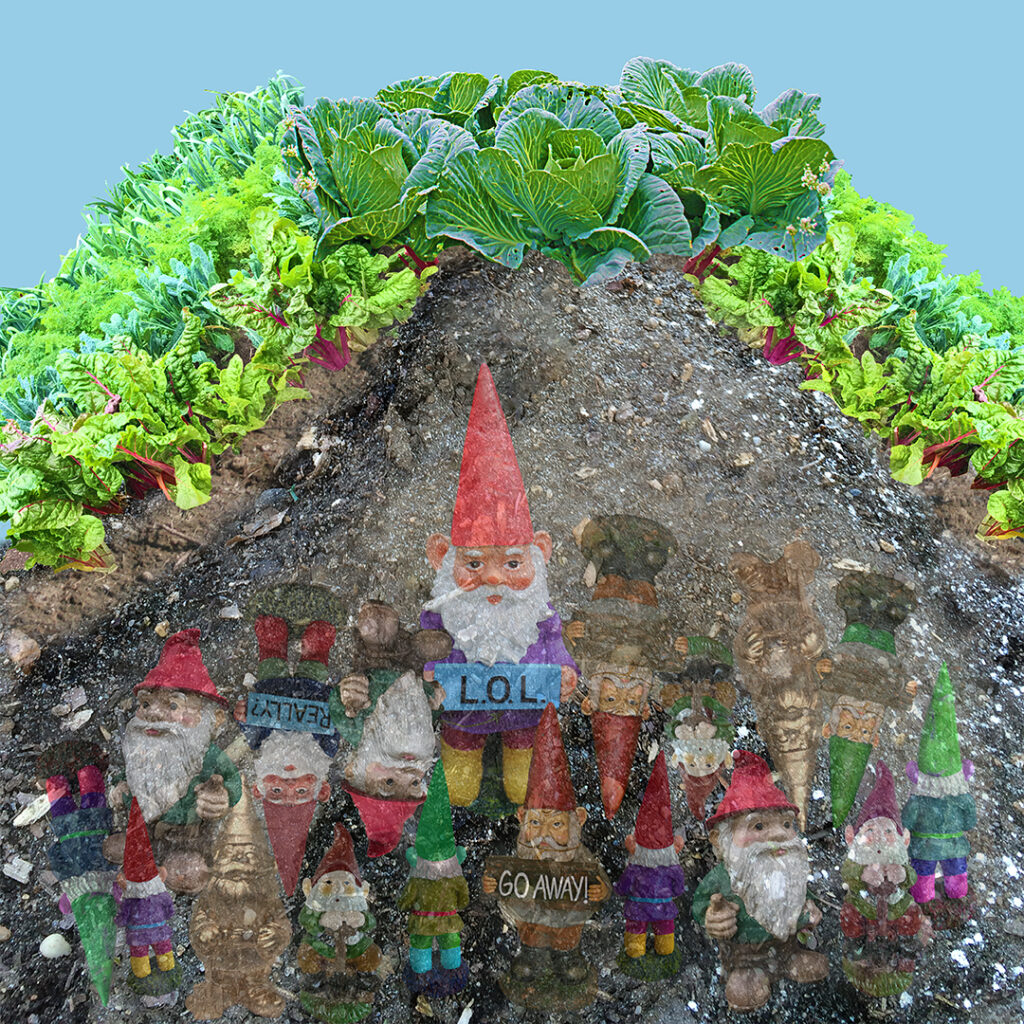Move over hugelkulture and hay bale gardening…there’s a far better, centuries-old way to create productive gardens with the practice of burying of gnomes. Began long ago by monks at Notre Dame De Manie Des Plantes, this means of building up the landscape in order to create more productive vegetable gardens has quietly been practiced for years by garden makers who are in-the-know. Now, thanks to garden writer and podcaster Yad Sloof, an award winning member of GardenComm International, this time-honored means of bed building has finally been brought into the spotlight.
“My grandmother practiced Gnomeinkulture for years,” Sloof told this reporter, “but I never really noticed that others weren’t aware of it until I started writing gardening books. As a kid, all I knew was that her vegetables were prolific…more colorful and a lot more fun to eat!”
It seems that gnomes possess the perfect combination of shape, color, and material composition to stimulate plant growth. “They are relatively consistent in their form,” Sloof says, “with solid base, upright stance, and pointy hat. Once they are installed into the ground, this provides the perfect amount of air spaces for drainage, with the solidity needed to support the soil above. My grandma always claimed that they also had a special magic that feeds the various mycorrhizae.”
There are two possible ways to build a Gnomeinkulture bed, Sloof explains. The first is to lay the gnomes on their sides, stacking them horizontally. Others prefer to place the first layer feet side down and hat side up, and then turn the second layer upside-down so that the pointy hats fit into each other. “My grandmother did a bit of each,” Sloof admits, “and near the end of her life, she’d just pitch those kitschy guys into a ditch, not caring how they landed. Frankly, I never saw any difference in how the crops in her Gnomeinkulture beds produced.”
Last year Sloof traveled the globe, beginning with a stop at Notre Dame De Manie Des Plantes, to interview those who have been making gardens in this traditional manner for generations. “I was lucky that I could take this much time for research,” he admits, “but thanks to my early investment in Barkcoin, I had the funds I needed to devote myself fully to this subject.”
“When I was doing the research for the book,” Sloof confided, “I made it a point to connect with plants on the social networking app, Treehouse. It was a bit shocking to hear from the plants themselves about why they were so much more productive when grown on Gnomeinkulture beds. They say that this accelerated growth was directly correlated to the joy they felt when the gnomes were finally out of their sight, permanently covered, and underground.”
Now that Sloof’s book, Gnomeinkulture: Plant Alchemy has been released, Sloof plans on touring the world, giving talks and doing book signings. But after that initial excitement has settles down, he says that he’ll be thrilled to be back in his own gardens, planting vegetables in his own Gnomeinkulture beds. “I’m looking forward to harvesting veggies like my grandma grew,” he says. “Quirky, colorful, and totally tasteless.”

The practices of Gnomeinkulture has been perfected by the monks at Notre Dame de Manie Des Plantes for centuries. It is said that the entire building is built over a gnome pit, and for this reason plants thrive indoors, even in the extremely dark interior.

There are several ways to stack gnomes when creating a Gnomeinkulture bed. Here, the traditional upright and upside-down configuration was used.

Gnomeinkulture grows extremely colorful vegetables that tend to be a bit quirky and tasteless.
Gnomeinkulture: Plant Alchemy, was released on April 1, 2023 and is available online, at local bookstores, or wherever gardening fools gather.


0 Comments